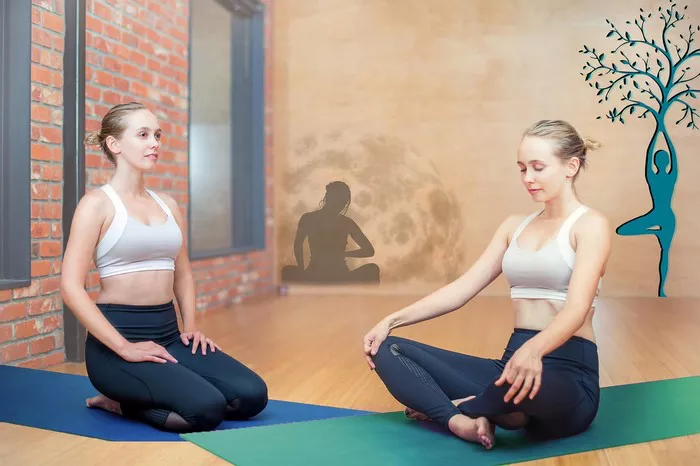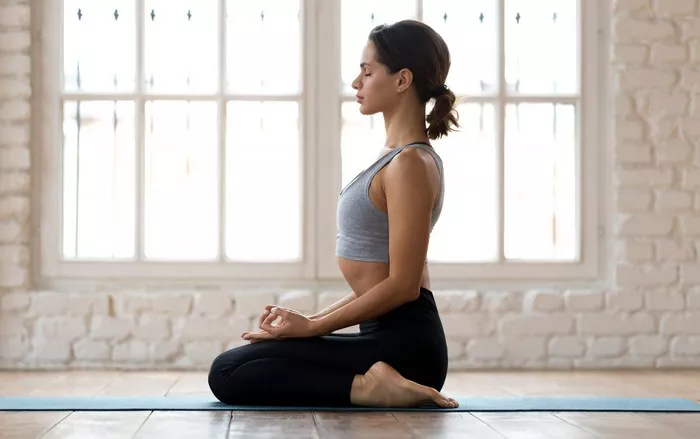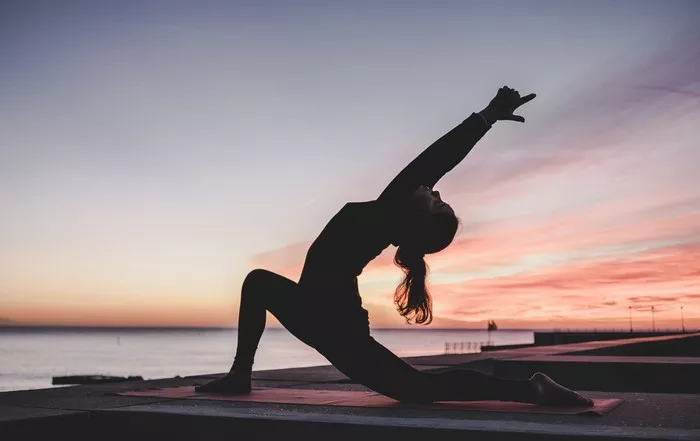Ashtanga Yoga is one of the most renowned and traditional forms of yoga, popularized by Sri K. Pattabhi Jois. Known for its dynamic, vinyasa-based style, Ashtanga consists of a series of postures (asanas) practiced in a particular order, coordinated with the breath. The Ashtanga Yoga system is divided into six series, each progressively more advanced than the last. These series are designed to build strength, flexibility, endurance, and mental focus.
The Intermediate Series, officially known as “Second Series” or “Nadi Shodhana” (the “series of purifying the nervous system”), is the second of these six series and focuses on deepening the practitioner’s flexibility, stamina, and ability to control their mind. But just how many poses are there in the Ashtanga Intermediate Series?
In this article, we will dive deep into the structure of the Ashtanga Intermediate Series, the number of poses it contains, and explore the overall goals and benefits of this series. Whether you’re an Ashtanga practitioner or someone exploring this unique style of yoga, understanding the Intermediate Series is essential for advancing on your yoga journey.
The Structure of Ashtanga Yoga
Before delving into the specifics of the Intermediate Series, it’s important to understand the overall structure of Ashtanga Yoga. The series are divided into six levels of practice, each representing a higher degree of difficulty:
- Primary Series (Yoga Chikitsa) – Focuses on detoxifying the body and building strength and flexibility.
- Intermediate Series (Nadi Shodhana) – Purifies the nervous system and deeply stretches the body.
- Advanced A, B, C, and D Series (Sthira Bhaga) – Builds strength, grace, and advanced physical and mental mastery.
Each series consists of a unique sequence of postures, and the practitioner works through these postures in a specific order, synchronized with breath and movement (known as vinyasa). While the Primary Series is widely practiced by beginners and intermediates, the Intermediate Series requires a higher level of flexibility, strength, and discipline.
What Is the Intermediate Series?
The Intermediate Series, or Nadi Shodhana, is designed to purify the body’s energy channels, called “nadis.” These nadis are believed to carry prana (vital life energy), and it is believed that by working through the Intermediate Series, practitioners clear blockages and achieve better energy flow throughout the body.
While the Primary Series primarily focuses on physical detoxification, the Intermediate Series works more on purifying the deeper layers of the body and mind, involving complex postures, deep stretches, and inversions that open up the hips, shoulders, spine, and legs. This series helps the practitioner advance towards mastering breath control (pranayama) and mental focus (dharana).
How Many Poses Are There in the Ashtanga Intermediate Series?
The Ashtanga Intermediate Series consists of 41 main asanas, although there are variations of some postures depending on the teacher’s instructions. This number is in contrast to the Primary Series, which contains around 75 postures. The Intermediate Series includes a range of different postures, from standing poses to seated poses, backbends, and inverted poses.
To break it down, the structure of the Intermediate Series is as follows:
1. Standing Postures (5 Poses)
The series begins with standing postures, just like the Primary Series. These poses help to build strength, focus, and proper alignment before moving into deeper stretches.
- Padangusthasana (Big Toe Pose)
- Padahastasana (Hand to Foot Pose)
- Utthita Trikonasana (Extended Triangle Pose)
- Utthita Parsvakonasana (Extended Side Angle Pose)
- Prasarita Padottanasana (Wide-Legged Forward Bend)
These standing poses engage the legs, hips, and core, preparing the practitioner for more advanced asanas that follow.
2. Seated Postures (9 Poses)
The seated postures in the Intermediate Series help stretch and strengthen the back, hips, legs, and shoulders. These asanas are fundamental in achieving the deeper flexibility required in the series.
- Dandasana (Staff Pose)
- Paschimottanasana (Seated Forward Bend)
- Purvottanasana (Reverse Plank)
- Ardha Baddha Padmottanasana (Half Bound Lotus Forward Bend)
- Triang Mukhaikapada Paschimottanasana (Three-Limbed Forward Bend)
- Janu Sirsasana (Head-to-Knee Pose)
- Marichyasana A, B, C, and D (Marichi’s Pose)
- Navasana (Boat Pose)
These postures begin to open the hips and hamstrings, challenge the balance, and promote a deep sense of calm and concentration.
3. Backbending Postures (6 Poses)
One of the defining aspects of the Intermediate Series is the emphasis on backbending. The backbends in this series help to increase spinal flexibility and strength.
- Bhujangasana (Cobra Pose)
- Salabhasana (Locust Pose)
- Dhanurasana (Bow Pose)
- Urdhva Dhanurasana (Upward Bow Pose/ Wheel Pose)
- Kapotasana (Pigeon Pose)
- Eka Pada Rajakapotasana (One-Legged King Pigeon Pose)
These postures open the chest, improve spinal mobility, and develop strength in the back and arms.
4. Inversions and Arm Balances (7 Poses)
Inversions and arm balances are key to advancing in the Intermediate Series, as they help with focus, balance, and building inner strength.
- Sarvangasana (Shoulder Stand)
- Halasana (Plow Pose)
- Karnapidasana (Ear Pressure Pose)
- Urdhva Padmasana (Upward Lotus Pose)
- Sirsasana (Headstand)
- Bakasana (Crow Pose)
- Titibasana (Firefly Pose)
Inversions and arm balances train the practitioner to overcome fear, enhance mental clarity, and improve arm and shoulder strength.
5. Finishing Postures (3 Poses)
The Intermediate Series finishes with a series of cooling and restorative postures that help bring the body back into balance after the intense asanas.
- Sarvangasana (Shoulder Stand)
- Halasana (Plow Pose)
- Savasana (Corpse Pose)
These finishing postures allow the body to rest, absorb the benefits of the practice, and integrate the energy shifts created during the session.
What Are the Benefits of the Intermediate Series?
The Ashtanga Intermediate Series offers a variety of physical and mental benefits. Some of the primary advantages of practicing the Intermediate Series include:
1. Improved Flexibility
The deep stretching and bending of the hips, back, and legs help increase flexibility over time. The focus on forward bends, backbends, and hip openers leads to more pliable muscles and joints.
2. Stronger Core and Arms
With poses like Chaturanga Dandasana, Navasana, and Bakasana, the Intermediate Series helps develop strength in the core, arms, and shoulders. This strengthens the entire body, making other physical activities easier.
3. Better Spinal Health
The backbending poses of the Intermediate Series are especially beneficial for the spine, promoting flexibility and mobility while preventing stiffness and discomfort.
4. Purification of the Nervous System
The Intermediate Series is intended to purify the energy channels (nadis), which improves mental clarity, focus, and emotional balance.
5. Enhanced Mental Discipline
Ashtanga Yoga is known for its focus on breath and movement. The Intermediate Series challenges practitioners to stay mentally engaged and present throughout the practice. This enhanced mental discipline improves concentration both on and off the mat.
Conclusion
The Ashtanga Intermediate Series, also known as Nadi Shodhana, contains 41 core postures (with variations) and is considered an advanced sequence in the Ashtanga system. This series focuses on deepening flexibility, building strength, and purifying the body’s energy channels. Although it is challenging, the rewards of perseverance in this series include improved physical health, mental clarity, and emotional balance.
Whether you are just beginning or you’re ready to explore the Intermediate Series, remember that Ashtanga is a journey that requires patience, dedication, and mindfulness. As you advance through the series, you will notice not only physical improvements but also a profound transformation in your ability to focus, breathe, and connect with your inner self.
Related topics:























